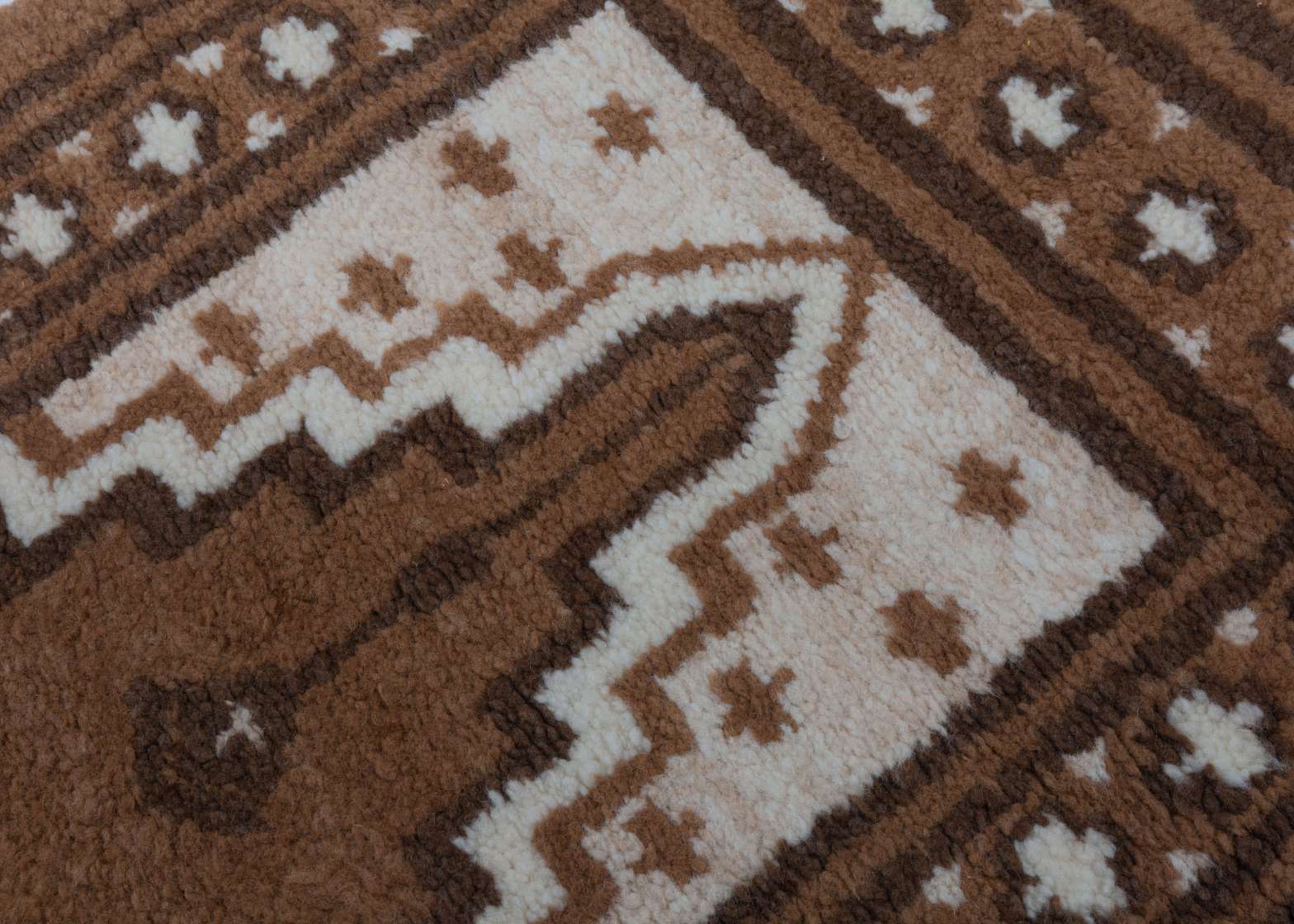We are very excited to have textile artist Emma Welty as our sixth artist. She is a researcher and weaver who focuses in on her relationship to the loom through craft legacies, inherited muscle memory and the links between textiles and language.
Scroll down to read the interview, learn about her process and enjoy photos of Emma’s studio.
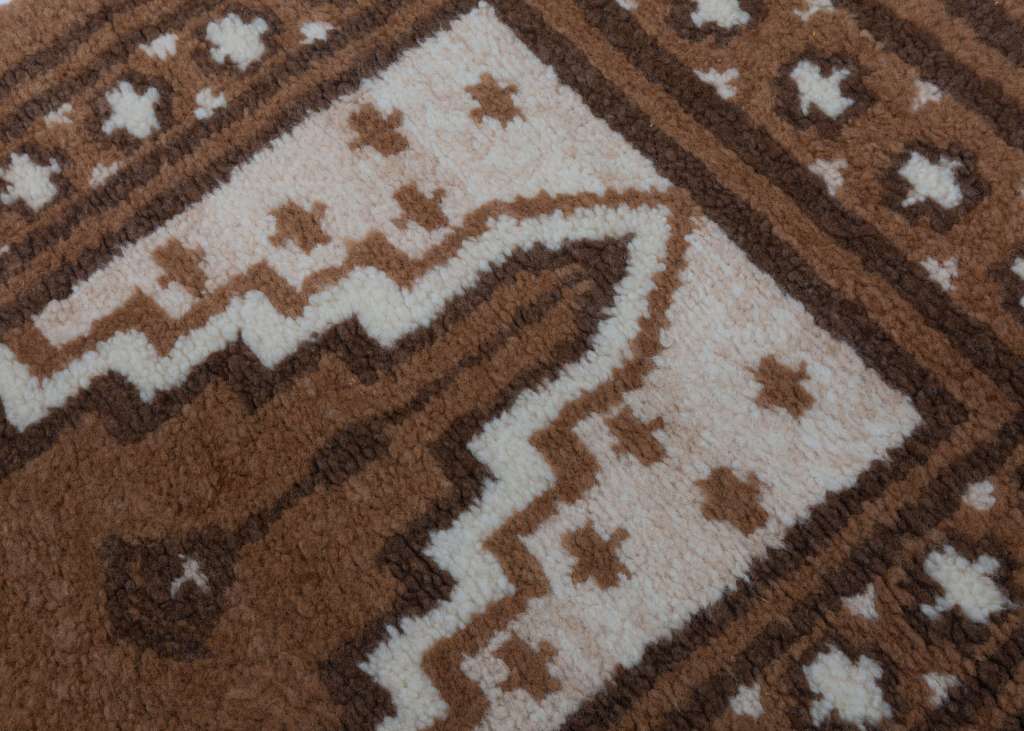
What first drew you to the world of textiles? How/when did you first get involved in weaving?
My mom taught me to sew, knit and crochet when I was very young, but I started practicing more seriously in high school. By that time I was already on a trajectory towards art school so I decided to attend Massachusetts College of Art and Design for Fibers and Art History. I learned to weave with Ann Wessmann at MassArt and later interned with Tess Fredette at the Isabella Stewart Gardner Museum where I learned more specifically about the world of textile conservation and historic tapestries.
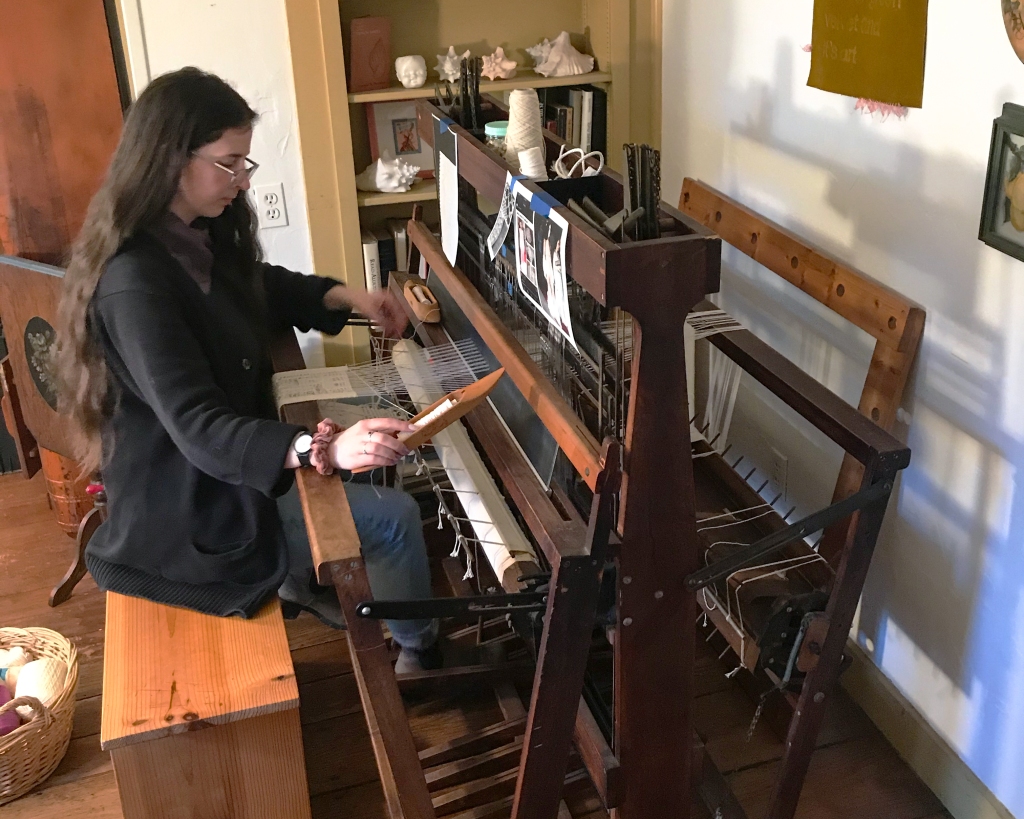
What part of textile/weaving history interests you the most? Are there any textile artists that you are influenced by?
When I took my first weaving and fiber classes I was attracted to the slowest techniques such as handspinning, tapestry and carpet weaving. Making discontinuous cloth feels more like drawing but there is still the satisfaction of the grid.
Some artists that have stuck with me over the years are Lenore Tawney, Cecilia Vicuña, Jen Bervin, Tanya Aguiñiga and Sonja Clark.

Tell us about your process, start to finish how you make your pieces.
I rely on a lot of editing and wordplay for my work so I often begin with a piece of text. When something strikes me I start to develop a digital or hand drawn cartoon on graph paper to plan the dimension of the cloth and the font for the text. I use a very neutral white cotton carpet warp and then find textural play in the weft, either using handspun local fiber, yarn dyed with natural dyes or vintage yarns. When choosing the texture and fiber I consider its relationship to the language I’m using and then develop a sculptural language that depends on the length and of the pile knots or the density of the cloth. By the time the work gets to the loom the majority of the design decisions are already made and the weaving time is a meditative period where I consider the next piece in the family.
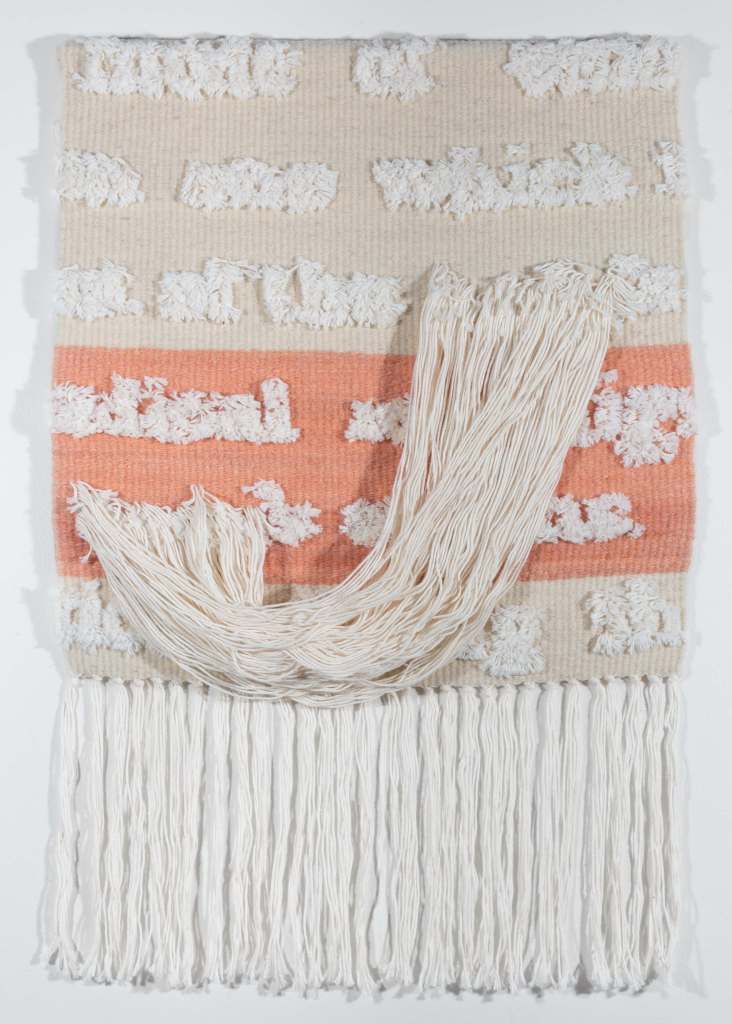
Why do you prefer the weaving process to other mediums? Do you see benefits in the final product by choosing a labor intensive method?
A labor intensive craft like carpet weaving (and lacemaking which also plays a role in my practice) is an investment. Not only in the object itself but in my body’s relationship to textile traditions which span so many generations. By choosing a slow and intensive technique, it guarantees that I will choose subject matter that I feel truly connected to because of how much time I will spend with the material.
How does your research on the links between textiles and language inform your work?
A consistent theme is translation. As an assimilated Armenian-American who doesn’t speak or read Armenian, my relationship to a lot of the folk history is dependent on translation. The act of transcribing a piece of text into cloth feels like a translation that invests my own material voice to the history of the words.
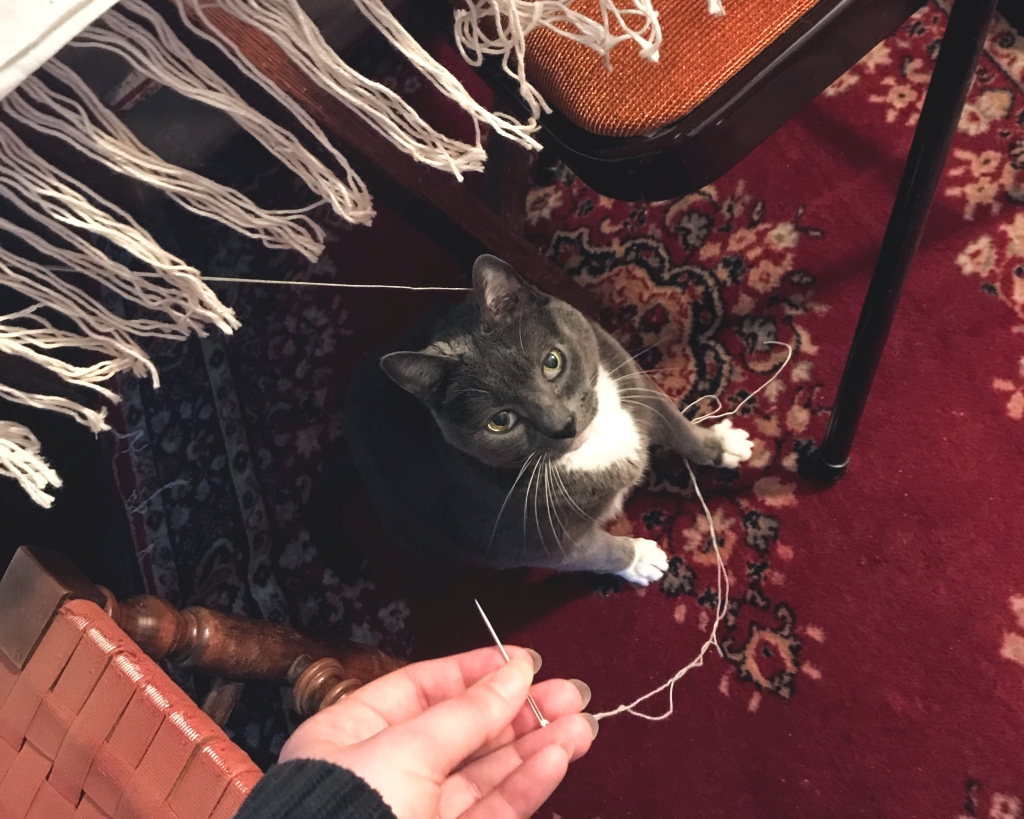
Tell us about the wording you use in your weavings, what are these derived from?
In this series of weavings, the text sources came from three places, a book of Armenian proverbs, a series of academic papers about the ways that bodies (specifically womxn’s bodies) carry cultural memory and trauma. This series was part of a claim that if trauma can be carried between generations, then so can craft.
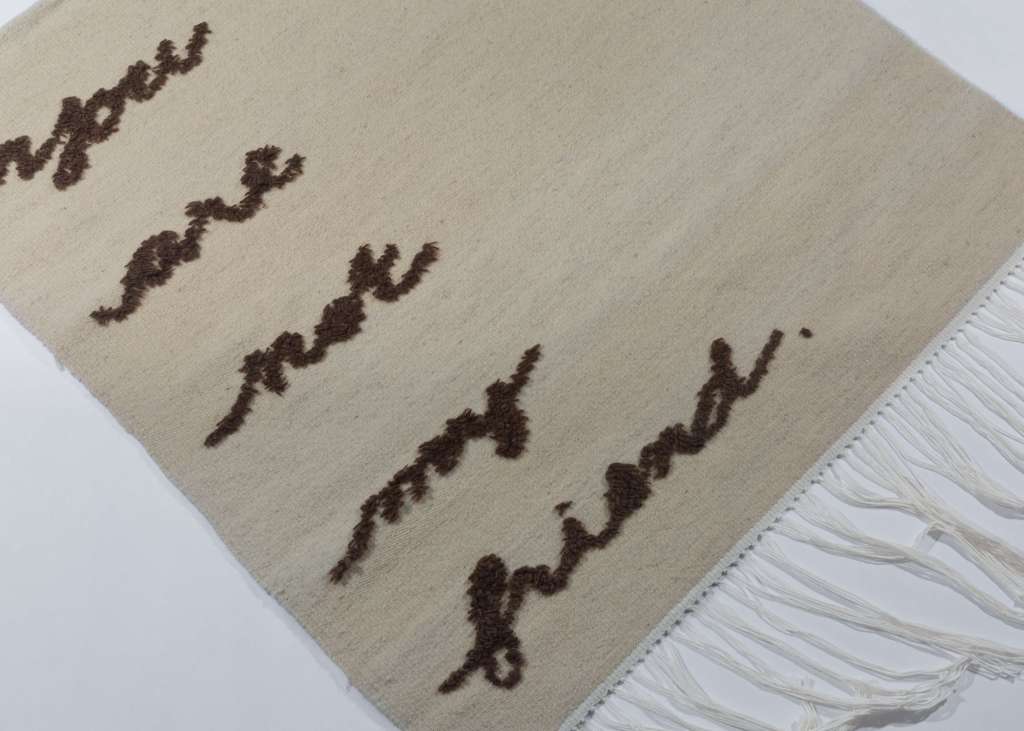
Where/what do you look to for inspiration? Has this changed over time or stayed constant?
My work has always been driven by environmental issues first. The human rights violations and pollution associated with the global textile trade, both historically and currently, is inherent in the medium of cloth. And while that content is still embedded in my practice through my choice and treatment of material, over the years I have found content in my own family’s tradition of cloth-making and textiles close to me personally. I’ve looked to objects made by my mother, grandparents and great-grandparents and worked to transcribe their essence into my own material language, from mittens, to carpet scraps, to lace doilies. Currently I am working with a collection of yarns and threads that were collected by my mother, and finding inspiration in using my late mother’s aesthetic and color palette but putting it into my own words and my own cloth.

Do you have any upcoming shows or events you are excited about?
I will be a virtual artist resident in the upcoming cycle of the Museum of Art and Design Artist Studio Programs beginning in February. During this residency I will be focusing on Armenian needlelace and developing a digital tutorial of the craft.

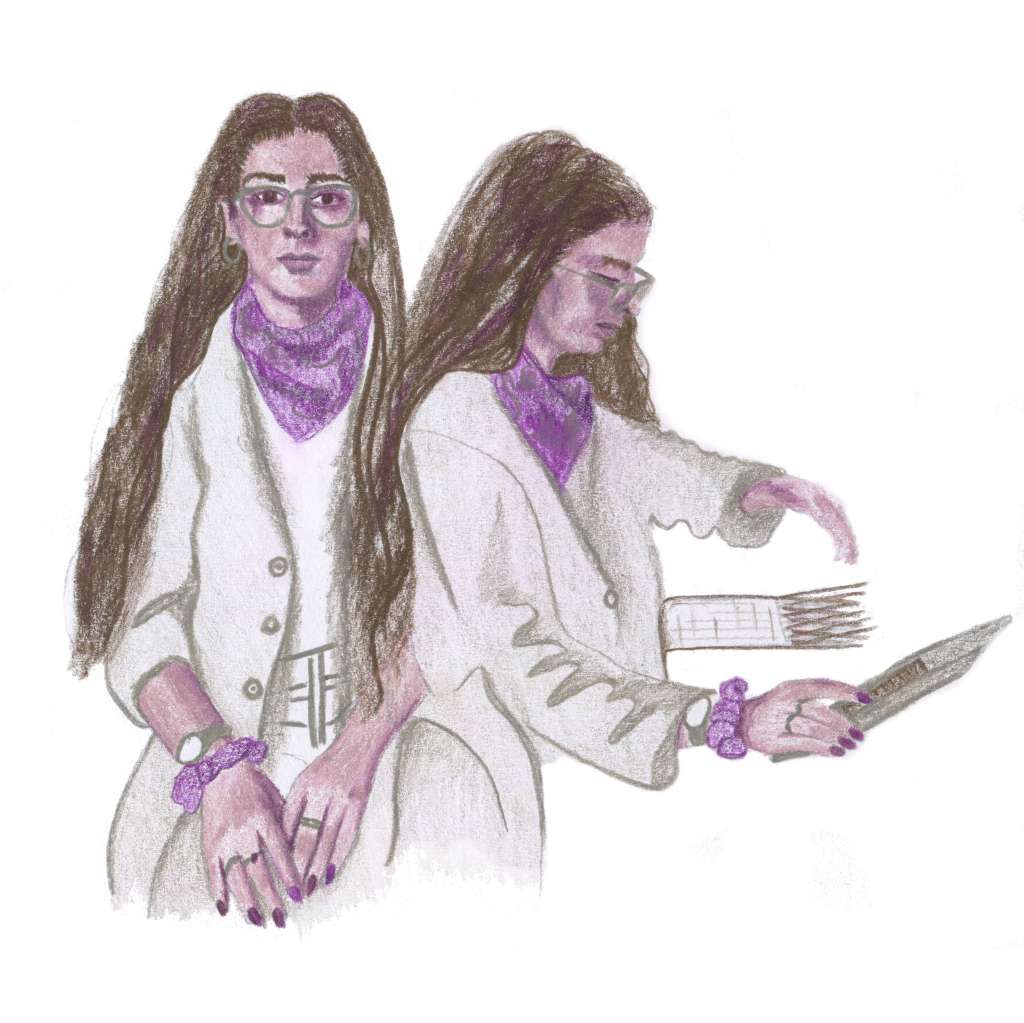
Thanks for being part of our Heirloom community and tuning into our sixth edition of Contemporary @ Heirloom.
– Zach, Lynn & Sam
*Illustration and Photography by Lynn Hunter

